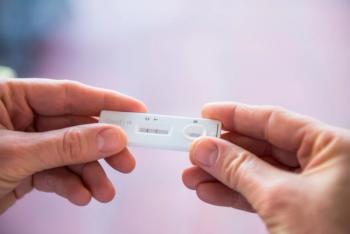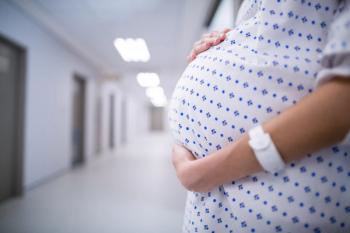Spontaneous abortion risk should be evaluated through pregnancy ultrasound in patients with infertility presenting with symptoms of vaginal bleeding after embryo transfer, according to a recent study published in the American Journal of Obstetrics & Gynecology.
Takeaways
- The study suggests that, in patients with infertility, the occurrence of vaginal bleeding alone does not significantly raise the risk of spontaneous abortion.
- The research emphasizes the importance of using pregnancy ultrasound for evaluating the risk of spontaneous abortion, particularly in patients with infertility who experience symptoms of vaginal bleeding after embryo transfer.
- Most studies on spontaneous abortion risk have primarily focused on fertile patients. This study addresses a gap in the research by specifically examining the association between bleeding and pregnancy outcome in patients with infertility.
- Abnormal ultrasound measurements, such as absent fetal heart rate (FHR) and abnormal crown-rump length (CRL), are significantly associated with an increased risk of spontaneous abortion in patients with infertility.
- The findings suggest that healthcare providers should conduct pregnancy ultrasounds in patients with infertility to assess spontaneous abortion risk, even when bleeding occurs.
A spontaneous abortion is reported in approximately 15% of pregnancies in patients with infertility. Ultrasound is often used to evaluate symptomatic patients, providing information on fetal growth. This makes it vital for providers to determine the progress of pregnancy through bleeding and ultrasound measurements.
Most studies on spontaneous abortion risk include fertile patients, linking low fetal heart rate (FHR) and low crown-rump length (CRL) to increased spontaneous abortion risk. However, few studies have evaluated the association between bleeding and pregnancy outcome in infertile patients.
Investigators hypothesized bleeding would be associated with increased spontaneous association risk regardless of ultrasound measurements of FHR and CRL. A retrospective cohort study was conducted to evaluate the association between bleeding and spontaneous abortion among patients with infertility.
Participants included individuals aged 18 to 46 years with infertility receiving a fresh or frozen embryo transfer from autologous oocytes between January 1, 2017, and December 31, 2019, with singleton intrauterine pregnancy confirmed by ultrasound. The presence of an intrauterine gestational sac seen by transvaginal ultrasound (TVUS) was used to confirm clinical pregnancy.
Study authors defined spontaneous abortion as, “the loss of an intrauterine pregnancy after clinical confirmation of pregnancy by sonographic identification of a gestational sac up to 20 weeks of gestation.” Clinical protocols included ovarian stimulation protocols, ovulatory trigger administration, and embryo culture techniques.
Measurements of estradiol, hCG, and serum progesterone were performed 10 days following embryo transfer. An initial viability ultrasound was performed 16 to 30 days after embryo transfer in patients with normally rising hCG.
Participants were asked about bleeding or spotting symptoms during each office visit, with data recorded in the electronic medical record through “yes or no” questions. Bleeding symptoms were reported based on the gestational age when they occurred. Recording of bleeding symptoms occurred until spontaneous abortion diagnosis or gestational week 8.
There were 1858 patients included in the analysis, 19.3% of whom had a spontaneous abortion and 80.7% a live birth. Patients with spontaneous abortion were aged a mean 1.5 years older than the live birth group.
Rates of fresh embryo transfer and cleavage-stage embryo transfer were 45.1% and 32.6% respectively in the spontaneous abortion group and 29.1% and 16.6% respectively in the live birth group. A history of previous miscarriage was reported in 24.8% of patients with spontaneous abortion and 17.7% with live birth.
At least 1 episode of vaginal bleeding was reported by 17% of patients, 37.5% of whom reported their first bleeding episode before 6 weeks, 37.1% during week 6 of gestation, and 25.4% during week 7 of gestation. Of patients, 56.6% received an ultrasound during gestational week 6.
There was no significant association between bleeding and absent fetal pole. The risk of spontaneous abortion was not significantly increased by bleeding alone among patients with a TVUS during week 6 of gestation, at a risk of 24.2% vs 20.1% in patients without bleeding.
Abnormal ultrasound measurements were significantly associated with increased spontaneous abortion risk. Patients with absent FHR and present fetal pole had a 63.3% risk of spontaneous abortion, vs 9.5% in patients with present FHR and present fetal pole.Similar results were seen among patients receiving a TVUS during week 7 of gestation.
These results indicated vaginal bleeding alone is not associated with increased spontaneous abortion risk. Investigators recommended a pregnancy ultrasound be performed in patients with infertility to evaluate spontaneous abortion risk.
Reference
Pollie MP, Romanski PA, Bortoletto P, Spandorfer SD. Combining early pregnancy bleeding with ultrasound measurements to assess spontaneous abortion risk among infertile patients. American Journal of Obstetrics & Gynecology. 2023;229(5):534.E1-534.E10. doi:10.1016/j.ajog.2023.07.031

















